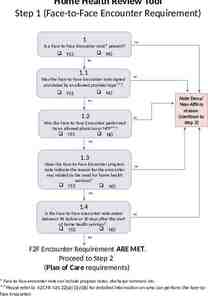Syslog and Log files Haiying Bao June 15, 1999
39 Slides212.50 KB
Syslog and Log files Haiying Bao June 15, 1999
Outline Log files – What need to be logged – Logging policies – Finding log files Syslog: the system event logger – – – – how syslog works its configuration file the software that uses syslog debugging syslog
What to be logged? The accounting system The kernel Various utilities – all produce data that need to be logged – most of the data has a limited useful lifetime, and needs to be summarized, compressed, archived and eventually thrown away
Logging policies Throw away all data immediately Reset log files at periodic intervals Rotate log files, keeping data for a fixed time Compress and archive to tape or other permanent media
Which one to choose Depends on : – how much disk space you have – how security-conscious you are Whatever scheme you select, regular maintenance of log files should be automated using cron (chap 10, periodic process)
Throwing away log files not recommend – security problems ( accounting data and log files provide important evidence of break-ins) – helpful for alerting you to hardware and software problems. In general, keep one or two months – in a real world, it may take one or two weeks for SA to realize that site has been compromised by a hacker and need to review the logs
Throwing away (cont.) Most sites store each day’s log info on disk, sometimes in a compressed format These daily files are kept for a specific period of time and then deleted One common way to implement this policy is called “rotation”
Rotating log files Keep backup files that are one day old, two days old, and so on. – logfile, logfile.1 , logfile.2, logfile.7 Each day rename the files to push older data toward the end of the chain – script to archive three days files
#! /bin/sh cd /var/log mv logfile.2 logfile.3 mv logfile.1 logfile.2 mv logfile logfile.1 cat /dev/null logfile Some daemons keep their log files open all the time, this script can’t be used with them. To install a new log file, you must either signal the daemon, or kill and restart it.
#! /bin/sh cd /var/log mv logfile.2.Z logfile.3.Z mv logfile.1.Z logfile.2.Z mv logfile logfile.1 cat /dev/null logfile kill -signal pid compress logfile.1 signal - appropriate signal for the program writing the log file pid - process id
Archiving log files Some sites must archive all accounting data and log files as a matter of policy, to provide data for a potential audit Log files should be first rotate on disk, then written to tape or other permanent media – see chap 11, Backups
Finding log files To locate log files, read the system startup scripts : /etc/rc* or /etc/init.d/* – if logging is turned on when daemons are run – where messages are sent Some programs handle logging via syslog – check /etc/syslog.conf to find out where this data goes
Finding log files Different operating systems put log files in different places: – – – – /var/log/* /var/cron/log /usr/adm /var/adm On linux, all the log files are in /var/log directory.
Outline Log files – What need to be logged – Logging policies – Finding log files Syslog: the system event logger – – – – how syslog works its configuration file debugging syslog the software that uses syslog
What is syslog A comprehensive logging system, used to manage information generated by the kernel and system utilities. Allow messages to be sorted by their sources and importance, and routed to a variety of destinations: – log files, users’ terminals, or even other machines.
Syslog: three parts Syslogd and /etc/syslog.conf – the daemon that does the actual logging – its configuration file openlog, syslog, closelog – library routines that programs use to send data to syslogd logger – user-level command for submitting log entries
syslog-aware programs Using syslog lib. Routines write log entries to a special file /dev/log reads /dev/klog consults syslogd /etc/syslog.conf dispatches Log files Users’s terminals Other machines
Configuring syslogd The configuration file /etc/syslog.conf controls syslogd’s behavior. It is a text file with simple format, blank lines and lines beginning with ‘#’ are ignored. – Selector TAB action – eg. mail.info /var/log/maillog
Configuration file selector Identify – source -- the program (‘facility’) that is sending a log message – importance -- the messages’s severity level – eg. mail.info /var/log/maillog Syntax – facility.level – facility names and severity levels must chosen from a list of defined values
Configuration file Facility names Facility kern user mail daemon auth lpr news Programs that use it the kernel User process, default if not specified The mail system System daemons Security and authorization related commands the BSD line printer spooling system The Usenet news system
Configuration file Facility names Facility uucp cron mark local0-7 syslog authpriv ftp * Programs that use it Reserved for UUCP the cron daemon Timestamps generated at regular intervals Eight flavors of local message syslog internal messages Private or system authorization messages the ftp daemon, ftpd All facilities except “mark”
Configuration file Facility names Timestamps can be used to log time at regular intervals (by default, every 20 minutes), so you can figure out that your machine crashed between 3:00 and 3:20 am, not just “sometime last night”. This can be a big help if debugging problems occur on a regular basis.
Configuration file severity level Level emerg (panic) alert crit err warning notice info debug Approximate meaning Panic situation Urgent situation Critical condition Other error conditions Warning messages Unusual things that may need investigation Informational messages For debugging
Configuration file selector Can include multiple facilities separated with ‘,’ commas – daemon,auth,mail.level action Multiple selector can be combined with ‘;’ – daemon.level1; mail.level2 action Selector are ‘ ’ --ORed together, a message matching any selector will be subject to the action. Can contain ‘*’ or ‘none’, meaning all or nothing.
Configuration file selector Levels indicate the minimum importance that a message must have in order to be logged – mail.warning, would match all the messages from mail system, at the minimum level of warning Level of ‘none’ will excludes the listed facilities regardless of what other selectors on the same line may say. – *.level1;mail.none action all the facilities, except mail, at the minimum level 1 will subject to action
Configuration file action (Tells what to do with a message) Action filename @hostname @ipaddress user1, user2, * Meaning Write message to a file on the local machine Forward message to the syslogd on hostname Forward message to the host at IP address Write message to users’ screens if they are logged in Write message to all users logged in
Configuration file action If a filename action used, the filename must be absolute path. The file must exist, syslogd will not create it. – /var/log/messages If a hostname is used, it must be resolved via a translation mechanism such as DNS or NIS While multiple facilities and levels are allowed in a selector, multiple actions are not allowed.
Config file examples # Small network or stand-alone syslog.conf file # emergencies: tell everyone who is logged on *.emerg * # important messages *.warning;daemon,auth.info # printer errors lpr.debug /var/adm/messages /var/adm/lpd-errs
# network client, typically forwards serious messages to # a central logging machine # emergencies: tell everyone who is logged on *.emerg;user.none * #important messages, forward to central logger *.warning;lpr,local1.none @netloghost daemon,auth.info @netloghost # local stuff to central logger too local0,local2,local7.debug @netloghost # card syslogs to local1 - to boulder local1.debug @boulder.colorado.edu # printer errors, keep them local lpr.debug /var/adm/lpd-errs # sudo logs to local2 - keep a copy here local2.info /var/adm/sudolog
Sample syslog output Dec 27 02:45:00 x-wing netinfod [71]: cann’t lookup child Dec 27 02:50:00 bruno ftpd [27876]: open of pid file failed: not a directory Dec 27 02:50:47 anchor vmunix: spurious VME interrupt at processor level 5 Dec 27 02:52:17 bruno pingem[107]: moose.cs.colorado.edu has not answered 34 times Dec 27 02:55:33 bruno sendmail [28040] : host name/address mismatch: 192.93.110.26 ! bull.bull.fr
Syslog ‘s functions Liberate programmers from the tedious mechanics of writing log files Put SA in control of logging – before syslog, SA had no control over what info was kept or where it was stored. Can centralize the logging for a network system
Syslogd (cont.) A hangup signal (HUP, signal 1) cause syslogd to close its log files, reread its configuration file, and start logging again. If you modify the syslog.conf file, you must HUP syslogd to make your changes take effect. – Kill -1 pid
Debugging syslog -- logger Useful for submitting log entries from shell scripts Can also use it to test changes in syslogd’s configuration file. – For example.
Add line to syslog.conf: local5.warning /tmp/test.log verify it is working, run logger -p local5.warning “test messages” a line containing “test messages” should be written to /tmp/test.log If this doesn’t happen: forgot to create the test.log file forgot to send syslogd a hangup signal
Software that uses syslog Program amd date ftpd gated gopher halt/reboot login/rlogind lpd Facility auth auth daemon daemon daemon auth auth lpr Levels err-info notice err-debug alert-info err crit crit-info err-info Description NFS automounter Display and set date ftp daemon Routing daemon Internet info server Shutdown programs Login programs BSD line printer daemon
Software that uses syslog Program named passwd Facility daemon auth Levels err-info err sendmail rwho su sudo syslogd mail daemon auth local2 syslog, mark debug-alert err-notice crit, notice notice, alert err-info Description Name sever (DNS) Password setting programs Mail transport system romote who daemon substitute UID prog. Limited su program internet errors, timestamps
Using syslog in programs openlog ( ident, logopt, facility); – messages are logged with the options specified by logopt begin with the identification string ident. Syslog ( priority, messge, parameters ); – send message to syslogd, which logs it at the sepecified priority level close ( );
/ * c program: syslog using openlog and closelog */ #include syslog.h main ( ) { openlog ( “SA-BOOK”, LOG PID, LOG USER); syslog ( LOG WARNING, “Testing . “); closelog ( ); } On the host, this code produce the following log entry: Dec 28 17:23:49 moet.colorado.edu SA-BOOK [84]: Testing.
Final words On linux, check following files: – – – – /etc/syslog.conf : syslog configuration file /etc/logrotate.conf : logging policy, rotate /etc/logrotate.d/* /var/log/* : log files try following commands to find out more. – man logrotate – man syslogd












































